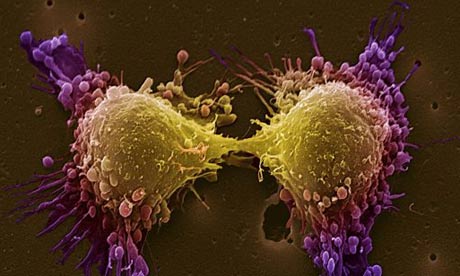Researchers Develop Technique to ‘predict’ Breast Cancer Metastasis
October 18, 2012 Leave a comment
By LUIS MIRANDA | THE REAL AGENDA | OCTOBER 18, 2012
It is called Raman Microspectroscopy, and it allows researchers to identify the metastatic phenotype of cancer cells from according to their lipid profile.
Researchers at the Institute of Biomedical Research of Bellvitge (IDIBELL) and the Institute of Photonic Sciences (ICFO) developed this tool to diagnose and identify how cancer cells multiply in women breast. The creation of this technique is an attempt to learn more about how breast cancer spreads and to try to predict its behavior.
As reported by both research centers, the “Raman microspectroscopy ‘, is a promising technique for identifying metastatic phenotype of breast cancer cells from their lipid profile.
The analysis is based on the characterization of the lipid component of the cells, which according to researchers is indicative of malignancy. This allowed the development of a classifications system for determining the ability of cells to metastasize.
The success of the research, funded by the Instituto de Salud Carlos III, Ministry of Science and Innovation and the Cellex Foundation of Barcelona was published in the online version of the scientific journal PLoS ONE. The achievement seems to have come from the technological development of Raman spectroscopy and the versatility of experimental models of breast cancer.
According to the researchers, the results of this process form the basis for introducing this technique in routine cytological diagnosis, which could be extended in the future to the diagnosis of other tumors.
Researchers analyzed main components to assess the different profile of the lipid composition of the breast cancer cells and generate a classification model of metastatic cells versus the non-metastatic ones.
The study coordinator, Angels from the IDIBELL group, explained that “the algorithm to discriminate metastatic capacity is a first step towards the stratification of breast cancer cells using this tool, which is labeled as fast and non-reactive. “
Researchers say that cytology studies helped them find a correlation between the activation of lipogenesis (the chemical reaction leading to fatty acids in an organism) and the amount of saturated fats in metastatic cells that indicate a worse prognosis and decreased survival.
The lipid content of the breast cancer cells might be a useful measure to determine various functions coupled to the progression of breast cancer.
The Real Agenda encourages the sharing of its original content ONLY through the tools provided at the bottom of every article. Please DON’T copy articles from The Real Agenda and redistribute by email or post to the web.


